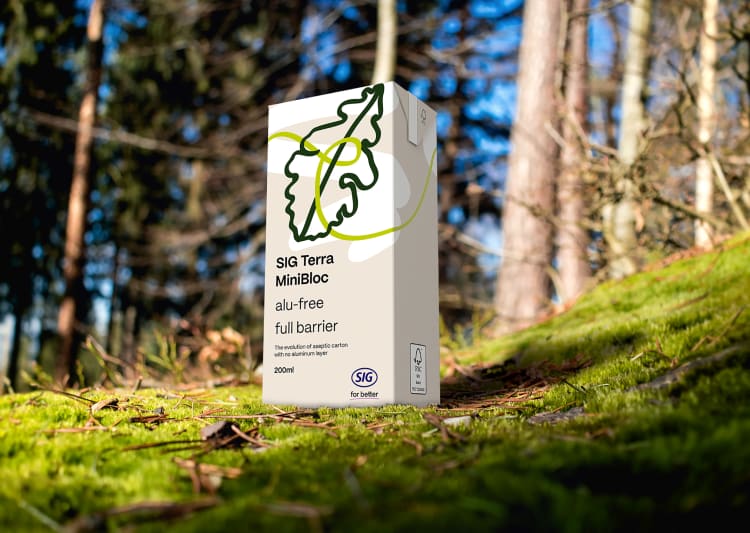Cardboard packaging with barrier properties and without aluminium
For other packaging materials, too, the trend is increasingly moving towards circular solutions. Drinks cartons are one example: Swiss manufacturer SIG has developed a full-barrier packaging material for aseptic carton packaging solutions that does not require an aluminium layer. They received a design for circularity award from 4evergreen, an association of over 100 manufacturers, designers, brand owners, researchers and recyclers. The new material is called SIG Terra Alu-free + Full Barrier and can also be used for oxygen-sensitive products such as juices thanks to the full barrier protection.4evergreen strongly believes that packaging recyclability begins with good design, and the alliance published the second edition of its Circularity by Design Guidelines featuring new guidance for sustainable beverage packaging design in summer 2023. From coffee cups to juice and milk cartons, designers have a reliable, industry-backed reference source to consult when making decisions around designing fibre-based packaging.

The new full-barrier packaging material for aseptic carton packaging does not require an aluminium layer.
Data-driven loop for packaging materials
Where did the raw materials used in packaging come from? When and where were they processed, and what exactly were they processed into? Shampoo bottles, cereal liners and other packaging solutions often have a complex structure consisting of different materials. For businesses to know what these are during the value creation process, they need transparency about the type, origin and processing of the raw materials used. But at present, there is no standardised recording or structured supply of information about recycling in plastics production processes. To make this easier going forward, GS1 Germany has joined forces with stakeholders from the plastics industry to develop the Circular Plastics Traceability guidelines for standardised collection and structured sharing of data relevant to recycling. A common data framework now enables all partners involved to share consistent data with each other and to trace back the journey of each plastic through the loop system.
“This is an important foundation for data-based management of material streams. At R-Cycle, as a development partner and user of the new GS1 Germany guidelines, we offer a standardised IT infrastructure for data sharing and transparency throughout the life cycle of plastics. The data is saved automatically in line with the Circular Plastics Traceability guidelines and can be shared with all parties along the value chain.” - Benedikt Brenken, director, R-Cycle



